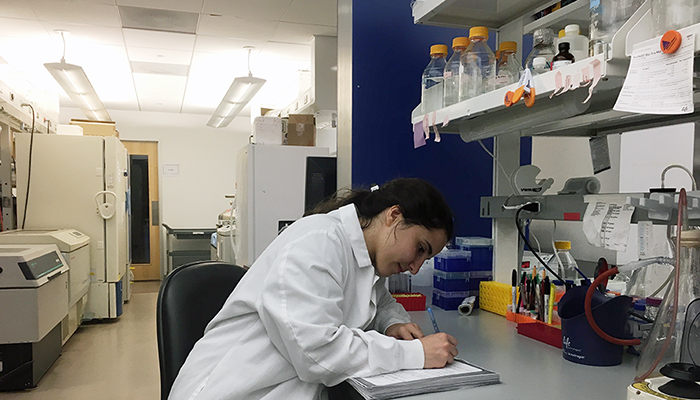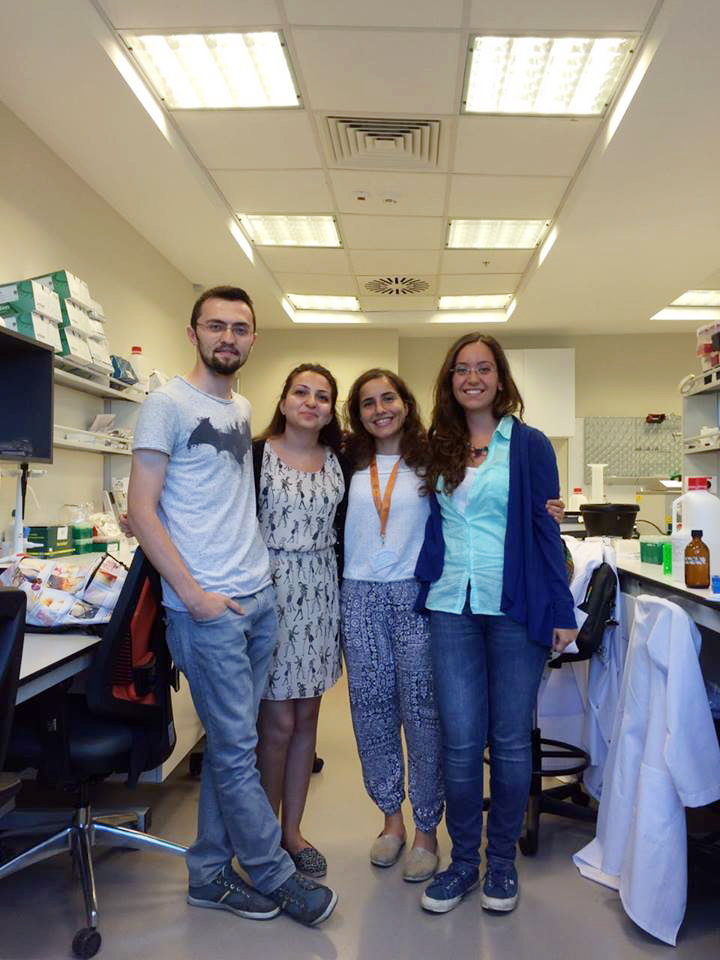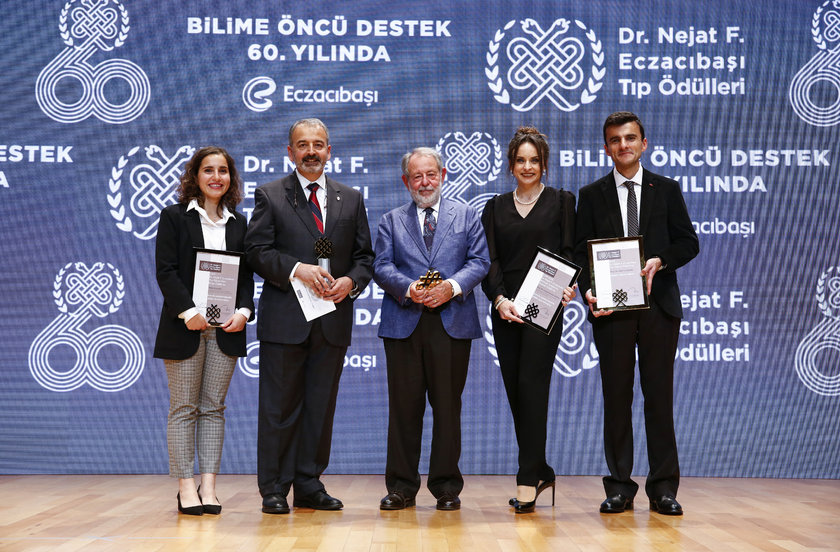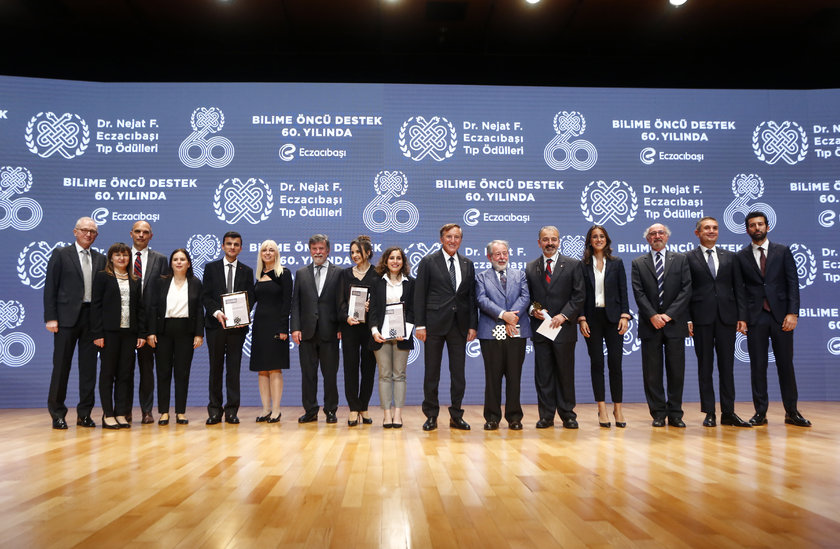Dr. Nejat F. Eczacibasi Medical Students Project Award

One of IBG’s research laboratory personnel Sena ALPTEKIN has received the “Dr. Nejat F. Eczacibasi Medical Students Project Award”, which is given to coordinators of successful scientific research projects conducted by medical students.
We did an interview with Ms. Alptekin about the scientific experience she gained on the path to the prize.
How did you start working in the research laboratories of Izmir Biomedicine and Genome Center?
I wanted to do a summer internship in a laboratory at the end of my third year of medical school. I sent emails to many laboratories abroad but was refused, partly for lacking experience and partly because the laboratories had long filled their capacity. I then checked out the laboratories in Turkey and spoke to Tamer Onder from Koc University Research Center for Translational Medicine, who advised me to speak to Esra Erdal, one of the group leaders of IBG’s Technological Research Programme. At the time, Esra Erdal and Tamer Onder had started to conduct a project together. Even though I was a student in the same campus, I was completely unaware of the great opportunity of IBG!! I immediately contacted Esra Erdal and started my internship in her laboratory that summer. Right from the start, Esra Erdal was a very warm instructor, ready to give scientific support to medical students. I think my biggest luck was having the opportunity to start my journey with Esra Erdal and the successful and helpful scientists of Erdal Lab.

Which groups did you work in and for how long; what kind of work did you conduct?
Like I said, I started at Erdal Lab. At the beginning, I was observing experiments, asking questions and trying to further understand the process. Slowly I began culturing cells on my own, conducting simpler basic RNA isolation, generating cDNA form the isolated RNA and then running a qPCR. Following Esra Erdal’s advice, we applied for the TUBITAK 2209-A Research Projects Fellowship Programme for Undergraduate Students. For this project, I started working on senescence and liver cancer cells, a subject not previously studied in a laboratory. I really enjoyed this subject and continued my studies even after the TUBITAK project ended. We obtained good results with the support of my colleagues in the laboratory. One of these was Mustafa Karabicici, who was a Master’s student then and is now a PhD student. Together we advanced this project and are now in the process of writing its paper.

How do you think working at IBG contributes to your scientific development?
Naturally, everything starts with a step taken forward, but I believe I was rather fortunate to have taken this first step at Izmir Biomedicine and Genome Center. After beginning to study senescence, good things started to happen one after another. Once summer had ended and school had started, I was going straight to the laboratory after school. Depending on the experiments, sometimes it was everyday, sometimes 3 times a week. Soon we had almost become a family at the laboratory, which had become our second home. Following the experience I gained here, I had the opportunity to work 3 months in the US next summer in the laboratory of Judith Campisi, who was working on the same subject. Upon my return, I had the chance to use the knowledge I gained abroad to enhance our work in Erdal Lab. After returning from the US, I did a 6-month internship at Charite University in Berlin in the laboratory of Clemens Schmitt, who was also working on senescence and blood cancer. So everything happened pretty much in chain reaction. If you’re doing a good job, this can open many doors for you. It’s up to you, though, to decide how to use these opportunities.
Let’s talk a little about the Eczacibasi award you received. How many years of knowledge do you have on the path to the prize?
I can say 3 years of intensive laboratory and medical education. An interest towards laboratory work and basic sciences is increasing daily among medical students. This is a fact I was observing at the start of my education and now at the end of my studies, I see it is still the case. The increase in awareness and interest in this subject is great, of course. Science, unfortunately, is too intensive and difficult an area to become a secondary occupation. You really ought to read constantly, follow-up your work and insist on repeating the unsuccessful experiments until they actually work :D You should also be economical and stay within budget of course. What I mean is, even though it may seem great on the outside, this is an area that requires a lot sacrifice and patience. Nevertheless, the pride and satisfaction you receive from data or scientific results obtained at the end makes it all worthwhile.
With which study were you entitled to receive the award?
I applied for this award with our study titled “The Effect of Therapy-Induced senescence on the Cancer Stem Cell Phenotype in Liver Cancer”. This project represents my novice period as well as my semi-skilled times, so to speak. We need to work much harder, of course, to master the craft. This small study I began in Esra Erdal’s laboratory has turned into a scientific paper I can publish in an international journal now while finishing medical school. This is naturally a major honour; it’s like watching your baby grow. Surely nothing can be achieved alone. We still continue to work on this project with Mustafa Karabicici and Canan Celiker, who are PhD students from Erdal Lab during our study. To summarise our study, we differentiate, from liver cancer (HCC), the cells which appear to have stem cell-like characteristics but actually don’t, induce it with Doxorubicin which is used in many types of chemotherapy and then analyse the senescence morphologies. We demonstrated that in these two cell groups, reprogramming and an increase in stem cell genes was occurring, as well as the cell group lacking stem cell characteristics beginning to show stem cell phenotypes. This result had never been demonstrated previously in liver cancer. We hope senescence cells will be targeted in the treatment process from now on, and that the prognosis for these patients will improve.
Where are you continuing your studies now?
Currently I am doing my internship at Heidelberg University and am unfortunately working at hospital from 07:30 until 17:30. Needless to say, you’re not able to go to a completely unknown laboratory after 17:00 to work, therefore it looks like I won’t be able to conduct any active experiments until I begin my residency. I’m planning to choose hematology/oncology for my residency, so I hope to be able to continue my scientific experiments clinically and in a laboratory. Although I’m not able to actively run experiments, I constantly follow the publications. I’m in touch with Esra Erdal and her laboratory, and we are working on having our project published in an international journal.
For award details:

